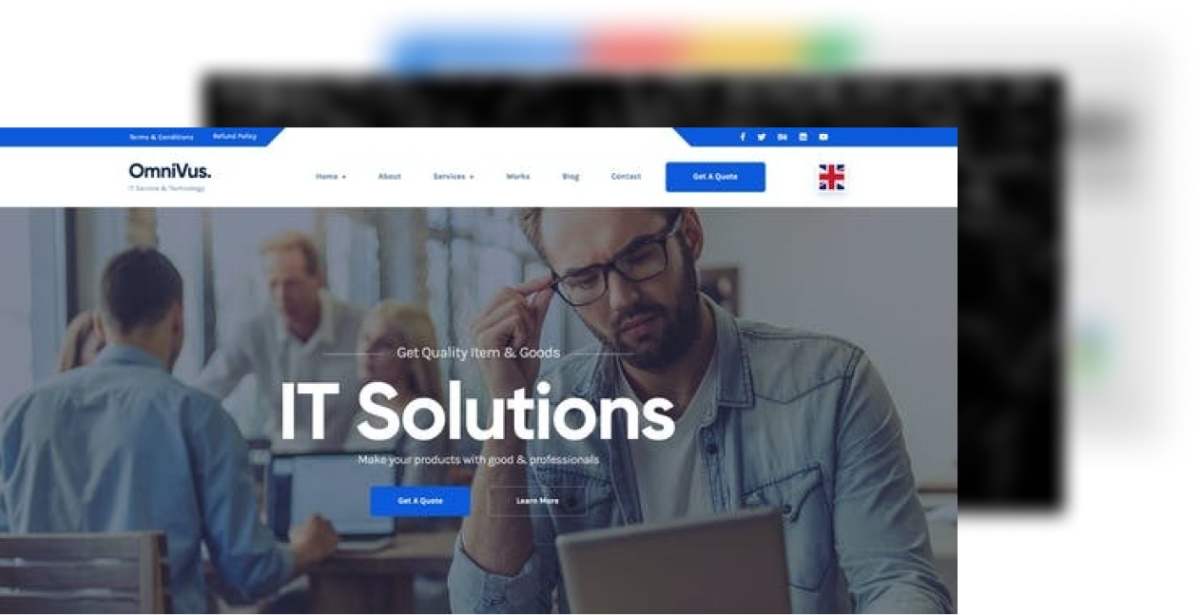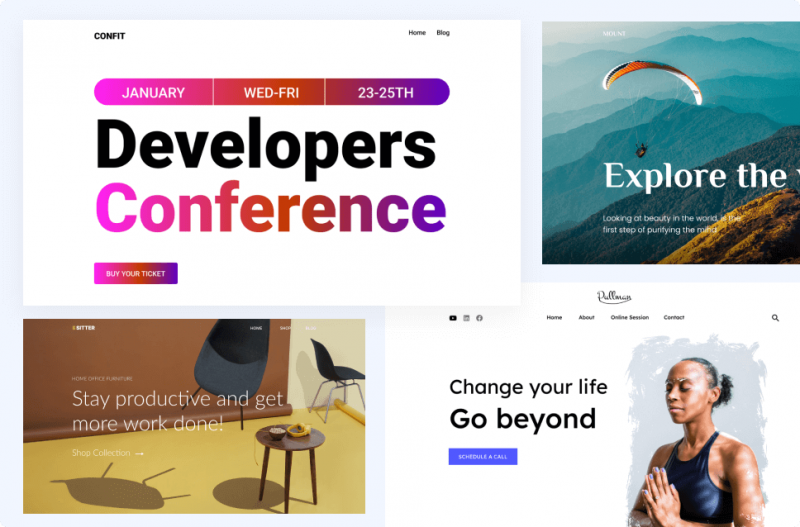Elevate Your Website With Stunning Wordpress Design Tips and Techniques
In today's digital landscape, a well-designed website is extremely important to keeping and catching visitor interest. By thoughtfully choosing the appropriate WordPress motif and enhancing crucial elements such as images and typography, you can significantly improve both the aesthetic allure and performance of your website. The nuances of reliable design prolong past fundamental selections; executing approaches like responsive design and the critical usage of white area can even more raise the user experience. What specific methods can transform your internet site into a compelling electronic visibility?
Pick the Right Theme
Selecting the ideal style is often a crucial step in building an effective WordPress website. A well-selected style not only enhances the visual charm of your site but also affects capability, individual experience, and overall performance.

Additionally, consider the customization alternatives available with the motif. A flexible motif allows you to customize your site to mirror your brand's identification without comprehensive coding knowledge. Confirm that the theme is suitable with popular plugins to maximize capability and improve the customer experience.
Lastly, examine and read evaluations upgrade history. A well-supported theme is most likely to stay secure and effective gradually, giving a solid foundation for your site's development and success.
Optimize Your Pictures
When you have actually selected an ideal motif, the following action in improving your WordPress website is to optimize your images. Top notch photos are vital for visual allure but can considerably reduce your internet site otherwise enhanced correctly. Begin by resizing images to the precise dimensions required on your site, which minimizes data dimension without compromising high quality.
Following, use the ideal file layouts; JPEG is excellent for photos, while PNG is better for graphics needing transparency. Additionally, consider using WebP format, which offers exceptional compression rates without compromising quality.
Executing image compression tools is additionally critical. Plugins like Smush or ShortPixel can instantly maximize photos upon upload, ensuring your site loads promptly and effectively. Furthermore, using descriptive alt text for images not only enhances ease of access but additionally boosts SEO, aiding your website rank much better in internet search engine outcomes.
Make Use Of White Room
Efficient website design hinges on the calculated use white space, additionally called adverse space, which plays a vital role in boosting user experience. White room is not merely a lack of content; it is an effective design aspect that helps to structure a website and guide individual attention. By integrating ample spacing around text, photos, and other aesthetic components, designers can produce a sense of equilibrium and consistency on the page.
Using white room successfully can enhance readability, making it less complicated for individuals to absorb information. It enables a more clear hierarchy, assisting site visitors to navigate content without effort. When elements are provided space to take a breath, users can focus on one of the most important elements useful source of your design without really feeling bewildered.
Furthermore, white room cultivates a sense of beauty and refinement, improving the total visual appeal of the site. It can also improve filling times, as much less chaotic layouts frequently need fewer sources.
Enhance Typography
Typography works as the foundation of reliable interaction in website design, affecting both readability and visual allure. Picking the appropriate font is essential; consider using web-safe fonts or Google Fonts that guarantee compatibility throughout tools. A mix of a serif font style for headings and a sans-serif font style for body text can create a visually appealing contrast, enhancing the total customer experience.
Additionally, take note of font dimension, line elevation, and letter spacing. A font style size of at the very least 16px for body text is usually advised to make sure clarity. Sufficient line height-- typically 1.5 times the font style dimension-- improves readability by avoiding message from appearing confined.

In addition, preserve a clear hierarchy by differing font weights and dimensions for headings and subheadings. This guides the visitor's eye and emphasizes important web content. Color option additionally plays a considerable duty; make sure high comparison between message and history for optimum presence.
Lastly, restrict the variety of various typefaces to 2 or three to preserve a natural appearance throughout your site. By attentively improving typography, you will certainly not just elevate your design however also make sure that your web content is efficiently interacted to your target market.
Implement Responsive Design
As the digital landscape continues to progress, applying responsive design has come to be important for producing internet sites that provide a seamless individual experience throughout numerous tools. Responsive design makes sure that your website adapts fluidly to various display dimensions, from desktop computer monitors to mobile phones, consequently boosting use and engagement.
To achieve receptive design in WordPress, begin by picking a responsive motif that immediately changes your next page format based upon the customer's tool. Make use of CSS media queries to apply various designing regulations for numerous screen sizes, making sure that components such as photos, switches, and message continue to be proportionate and available.
Incorporate flexible grid layouts that permit web content to reposition dynamically, preserving a meaningful structure across tools. In addition, focus on mobile-first design by creating your site for smaller sized screens before scaling up for bigger display screens (WordPress Design). This strategy not only enhances efficiency yet additionally straightens with he said search engine optimization (SEO) techniques, as Google favors mobile-friendly websites
Verdict

The nuances of efficient design expand past basic options; carrying out approaches like receptive design and the calculated usage of white room can further elevate the user experience.Efficient internet design pivots on the critical usage of white room, also known as unfavorable area, which plays a critical role in boosting user experience.In final thought, the application of efficient WordPress design methods can substantially enhance site performance and aesthetics. Selecting a proper style lined up with the site's objective, optimizing photos for efficiency, making use of white room for improved readability, improving typography for clearness, and adopting responsive design principles collectively contribute to an elevated customer experience. These design aspects not just foster involvement however likewise make sure that the site meets the diverse requirements of its audience throughout different gadgets.
Comments on “Why Professional WordPress Design Matters for Your Site Success”